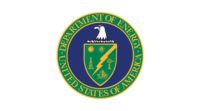WASHINGTON - The U.S. Department of Energy (DOE) announced the release of five case studies from a series spotlighting some of the most innovative projects funded under its BetterBuildings program. According to DOE, BetterBuildings is a national program working to transform the marketplace for energy efficiency upgrades in homes, businesses, and institutions. More than 40 state and local governments and partnering organizations received over $500 million to lay the foundation for a sustainable energy efficiency market in the United States. The case studies have been released to help program administrators and their partners optimize their energy efficiency initiatives.
DOE said the first five BetterBuildings case studies represent a first step by the program to share best practices, effective tools, and data about the performance of energy efficiency approaches. These case studies will be used as blueprints for future energy efficiency programs, and will help achieve DOE’s goal of providing energy efficiency upgrades to 1 million homes by 2013.
The case studies focus on four BetterBuildings partners in Seattle; Austin, Texas; Michigan; and Rutland, Vt. The featured partners represent a diverse range of climates, participating partners, federal funding levels, and varying levels of local experience with energy efficiency upgrades. Each case study focuses on one important element in the execution of an energy efficiency upgrade program - Getting Started, Program Design, Workforce, and Driving Demand. The case studies are designed and written to highlight the most successful and replicable components of the BetterBuildings partners’ programs.
Two “Getting Started” case studies on the Seattle and Austin programs examine different innovative approaches to achieve a successful program launch. The city of Seattle focused on building strong partnerships to expand their program’s impact, while the city of Austin used a short-term promotional effort to jump-start interest.
The Michigan “Program Design” case study explores the fast and effective roll out of an innovative delivery model - neighborhood sweeps. This approach uses intensive, neighborhood focused house-by-house campaigns to test consumer responses to different outreach methods, financing options, and incentive offerings. Under the program, the organizers are constantly evaluating results to facilitate real-time program improvement.
The Austin “Workforce” case study explains how to work collaboratively with contractors, respond to contractors’ needs, and build partnerships for marketing and program delivery.
The Rutland “Driving Demand” case study showcases how the program encouraged partners to think creatively about engaging consumers. By understanding the community and local resources, the program leveraged relationships to deliver its message through local peer and neighborhood networks.
For more information about the BetterBuildings program, visit www1.eere.energy.gov/buildings/betterbuildings/index2.html.
Publication date:06/13/2011
Related Articles
×
Copyright ©2024. All Rights Reserved BNP Media.
Design, CMS, Hosting & Web Development :: ePublishing




